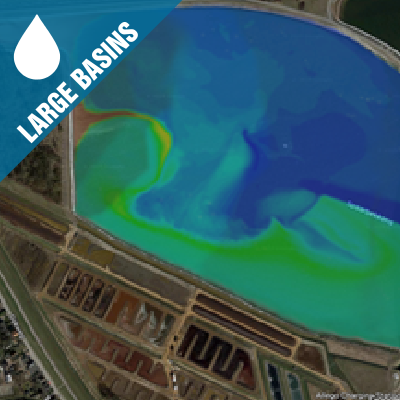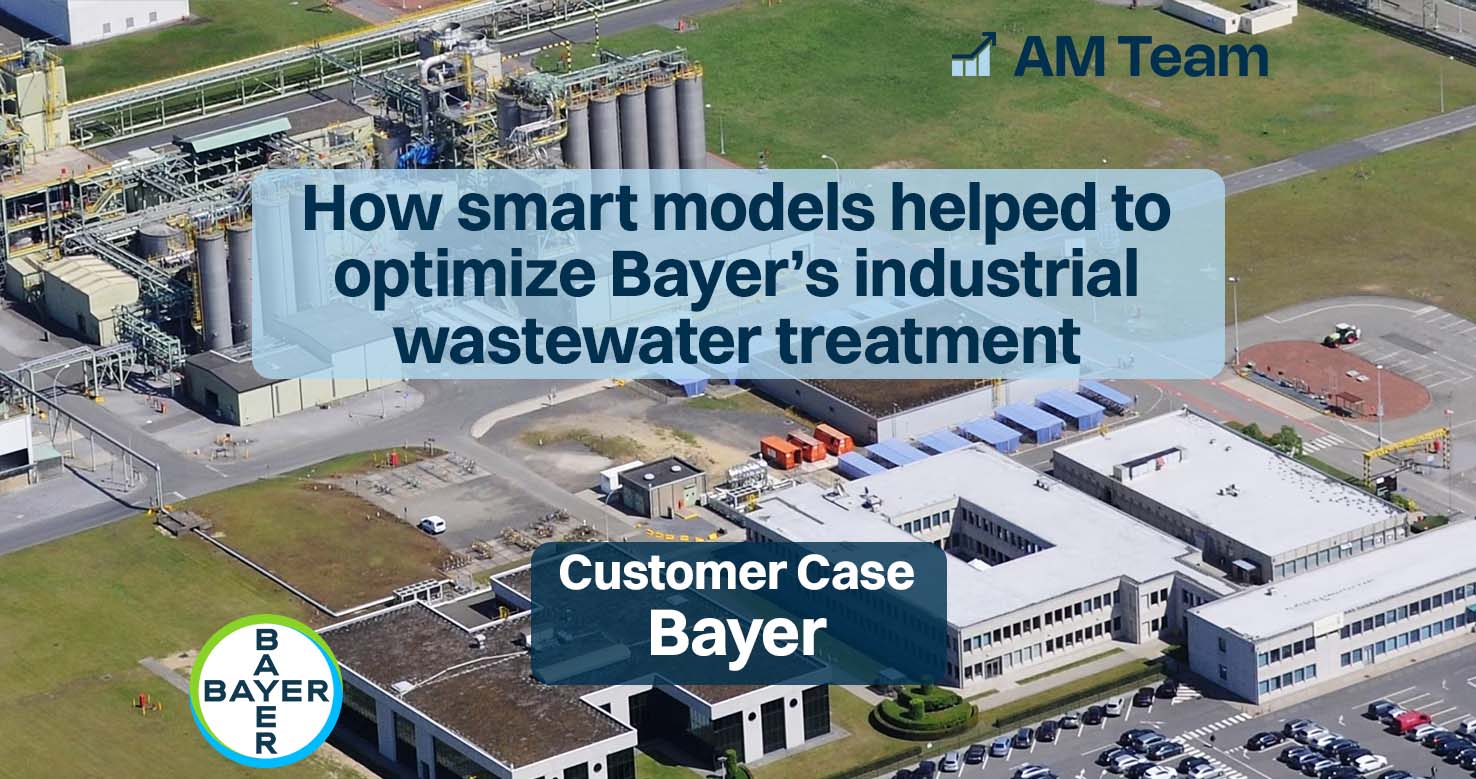Mixing in large drinking water reservoirs: CFD project at water-link
CFD was used to optimise mixing (remove dead zones, avoid short-circuiting) in a large drinking water storage basin for surface water, preventing blue algae blooms and stratification.

The Belgian drinking water company water-link provides drinking and process water to the Antwerp region. At their 300,000 m³/d Notmeir-Walem production facility, the Eekhoven basin provides a buffer capacity of 15-20 days. The basin has a volume of 2.6 million m³. Due to the collaboration with AM-Team, water-link could optimise process performance and save onsite testing time and costs, combined with savings of investment and operational cost.

Objective of this project
To guarantee water quality, facilitate operations and prevent blue algae blooms, water-link wanted to install point aerators to optimise the mixing in the basin. water-linked asked AM-Team to analyse the exisiting basin and determine the optimal aerator configuration, both in terms of performance and cost.
"We really wanted to focus on removing dead volumes, avoiding short-circuiting and making sure that the reservoir was well mixed. We could do that by relying on AM-Team's CFD simulations." - Sven Kempeneers, process engineer at water-link
Solution
Using a full 3D CFD basin model, we assessed different aerator configurations (number and placement) and air flow rates under varying water flow conditions. Mixing and residence times were then quantified and compared. Also vertical stratification was visualised.

Figure: the original basin had a signficant dead volume which was removed after installing the aeration system. CFD led to the most optimal design without the need for onsite testing.
"We immediately noticed that AM-Team had a very important experience on reservoir CFD modelling, but not only in terms of modelling, but also in terms of practical mindset."
"The CFD model showed what is happening in practice, which is a relief as it shows that the models are really working." - Sven Kempeneers (water-link)
Value for water-link
CFD allowed for 'what-if' testing. For example 'what if we would use 5 aerators instead of 6 and would change the position and air flow rate like this?' This avoided costly and time consuming onsite testing and trialing and led to the most optimal design.
"We were very happy that they were able to convince us to use five aerators instead of six or eight that we initially expected. We also managed to lower the required air flow rate. So we were able to make some positive adjustments in both CapEx and OpEx." - Sven Kempeneers (water-link)
The new system started operating the beginning of March, 2022.
Contact us
Suggested Projects


Subscribe to our newsletter


-mod_409.jpg)





